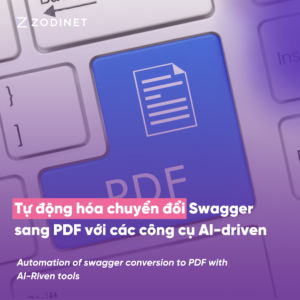In the era of digital transformation, artificial intelligence (AI) is no longer a distant concept—it has become an essential tool for optimizing business operations. Particularly, Large Language Models (LLMs), a branch of AI, are opening up new opportunities for internal management. From automating processes and supporting HR to enhancing communication, LLMs promise exceptional efficiency. So, how can businesses apply this technology? Let’s explore!
What Are LLMs?
LLMs are AI models trained on massive datasets, capable of understanding and generating human-like natural language. They can answer questions, write text, analyze data, and even offer intelligent suggestions. In a business context, where workloads are constantly increasing, LLMs not only save time but also improve the quality of internal management—a critical factor in determining an organization’s success.

Practical Applications of LLMs in Internal Management
Automating Administrative Processes
Imagine no longer spending hours drafting emails, reports, or scheduling meetings. LLMs can do it in seconds. For example, with basic input, an LLM can write an internal announcement email or summarize a lengthy report into a few concise lines. Tasks like sorting leave requests or managing expenses are also processed quickly, minimizing human error.
Enhancing HR Management
In recruitment, LLMs can screen hundreds of resumes, assess candidates’ fit with company culture, and generate tailored interview questions. For current employees, they can create personalized training content or deploy chatbots to address common queries about salary policies or benefits. Some companies even use LLMs to analyze performance data and provide individualized improvement suggestions.
Improving Internal Communication
Communication is the lifeblood of any business, and LLMs are making it smoother than ever. LLM-powered virtual assistants can efficiently connect teams by automatically answering employee questions, updating leave information for the workforce, and more—all in a style remarkably similar to human interaction.
Data Analysis and Decision Support
LLMs don’t just “talk”—they “think.” By analyzing data from various departments, they can forecast staffing needs, detect potential issues, and propose solutions based on trends.
Ensuring Information Security
In a business environment, security and legal compliance are paramount. LLMs can monitor internal communications, flagging inappropriate content or policy violations. They also review documents to ensure compliance with labor laws, reducing legal risks for the company.
Key Benefits of Applying LLMs
- Time and Cost Savings: Automation reduces manual tasks, saving hours of work each week.
- Improved Employee Experience: Quick support makes work feel lighter and more efficient.
- Increased Competitiveness: Companies adopting advanced technology attract talent and retain clients more effectively.
Challenges for Businesses
Implementing LLMs requires significant initial investment in infrastructure and employee training. Data security is also a concern when internal information is processed by AI. However, businesses can overcome these by leveraging existing LLM platforms, applying robust data encryption, and conducting training sessions to familiarize staff with the technology.
Conclusion
LLMs are not just a fleeting trend—they are part of a long-term technological revolution. In the future, we can expect them to integrate deeper into every aspect of business, from supply chain management to building organizational culture. Companies that start adopting LLMs today will gain a significant edge in the digital transformation race. Applying LLMs to internal management not only enhances operational efficiency but also fosters a smarter, more flexible workplace. Now is the time for leaders to act: experiment, implement, and harness the power of this technology to take their businesses to new heights. Are you ready?



